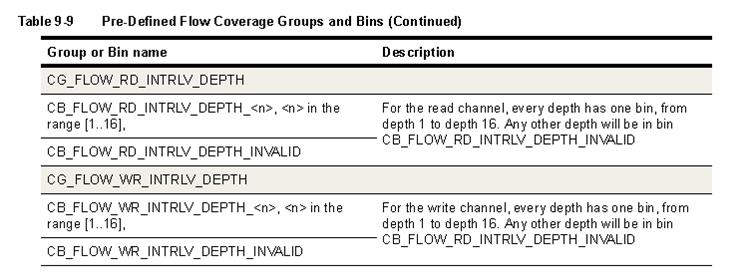There is a built-in AXI VIP example that can show you how to generate AXI VIP built-in coverage, it also shows how user can define their own functional coverage groups.
You can install the example with following command:
$DESIGNWARE_HOME/bin/dw_vip_setup -path design_dir -e amba/tb_axi_vmm_10_intermediate_sys -svtb
There is a README in that example, you can follow the README to run and do coverage analysis.
interleave coverage























 6465
6465

 被折叠的 条评论
为什么被折叠?
被折叠的 条评论
为什么被折叠?








